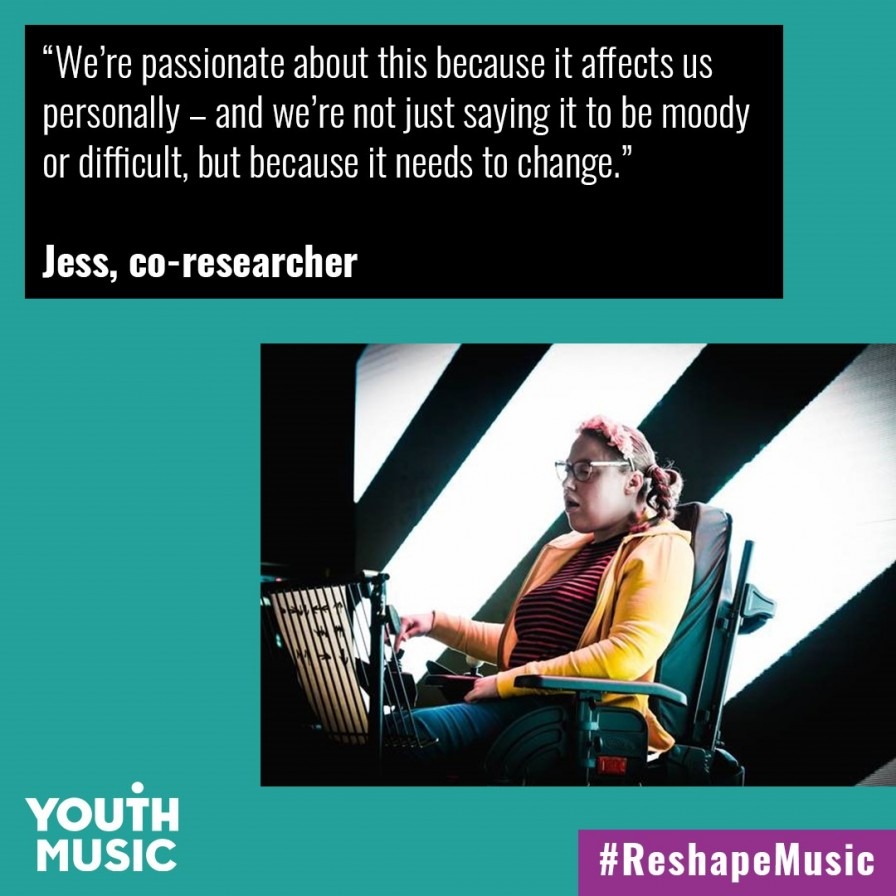5 things you can do to Reshape Music

Today we launched a new research report Reshape Music: A report exploring the lived experience of Disabled musicians to access music education and beyond which sets out the barriers faced by Disabled musicians to access music education and music-making and includes a series of important recommendations. In this blog post we've listed 5 things you can do to help #ReshapeMusic and provided links to a range of useful resources.
1. Learn about the social model of disability
Inclusion London have a comprehensive suite of resources to help you learn more about the social model of disability and the cultural model of deafness.
Read more about how the social model of disability can be applied in practice in music education in this blog from Barry Farrimond of Open Up Music.
2. Audit the accessibility of your music provision
Use Youth Music’s quality framework for disabled musicians as a reflection tool.
If you’re providing online tuition, read Drake Music’s blog about online accessibility.
Consider whether you have enough accessible instruments in your inventory. Find out more about adapted instruments in this guide from Take it Away and share the guide with your music leaders.
If you have a music venue, consider signing up to Attitude is Everything’s charter.
3. Listen to and act upon the voices of Disabled young people
If you work with Disabled young people, ask them to share their experiences on social media using the hashtag #Reshape Music.
Sound Connection’s Youth Engagement Equaliser tool can help you to think about first steps to growing youth voice and participation in your organisation.
4. Recruit more Disabled people into your workforce
If you are keen to bring more Disabled people into your workforce, then say this in your recruitment. Target your adverts in places to reach Disabled people. Disability Arts Online has a job listings service and there may be networks you can tap into on Facebook or Twitter. Find out what access needs people have before the interview, so that you can provide reasonable adjustments and ensure the interview is accessible.
Become a disability confident employer.
5. Improve the accessibility of your external communications
Keep your writing accessible by using short sentences and words. You can use online checkers to check the readability of text. This A-Z guide provides simple plain English alternatives to common words.
You can download free software to do initial accessibility checks on your website such as WAVE and JAWS and this website provides information about the different tools available. We have also been recommended this course on website accessibility. The Digital Culture Network recently produced this article on How To Make Your Online Content Accessible.

